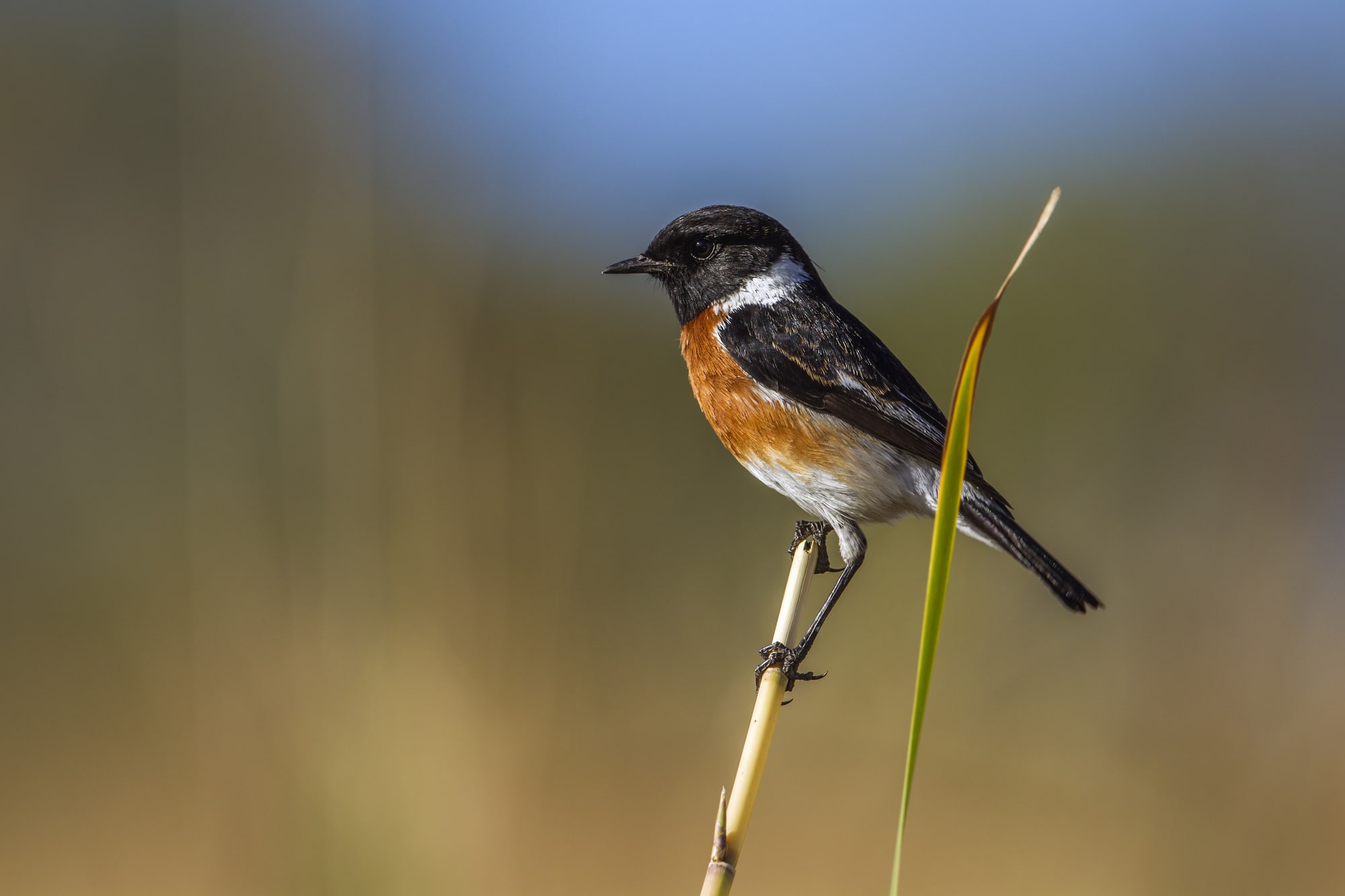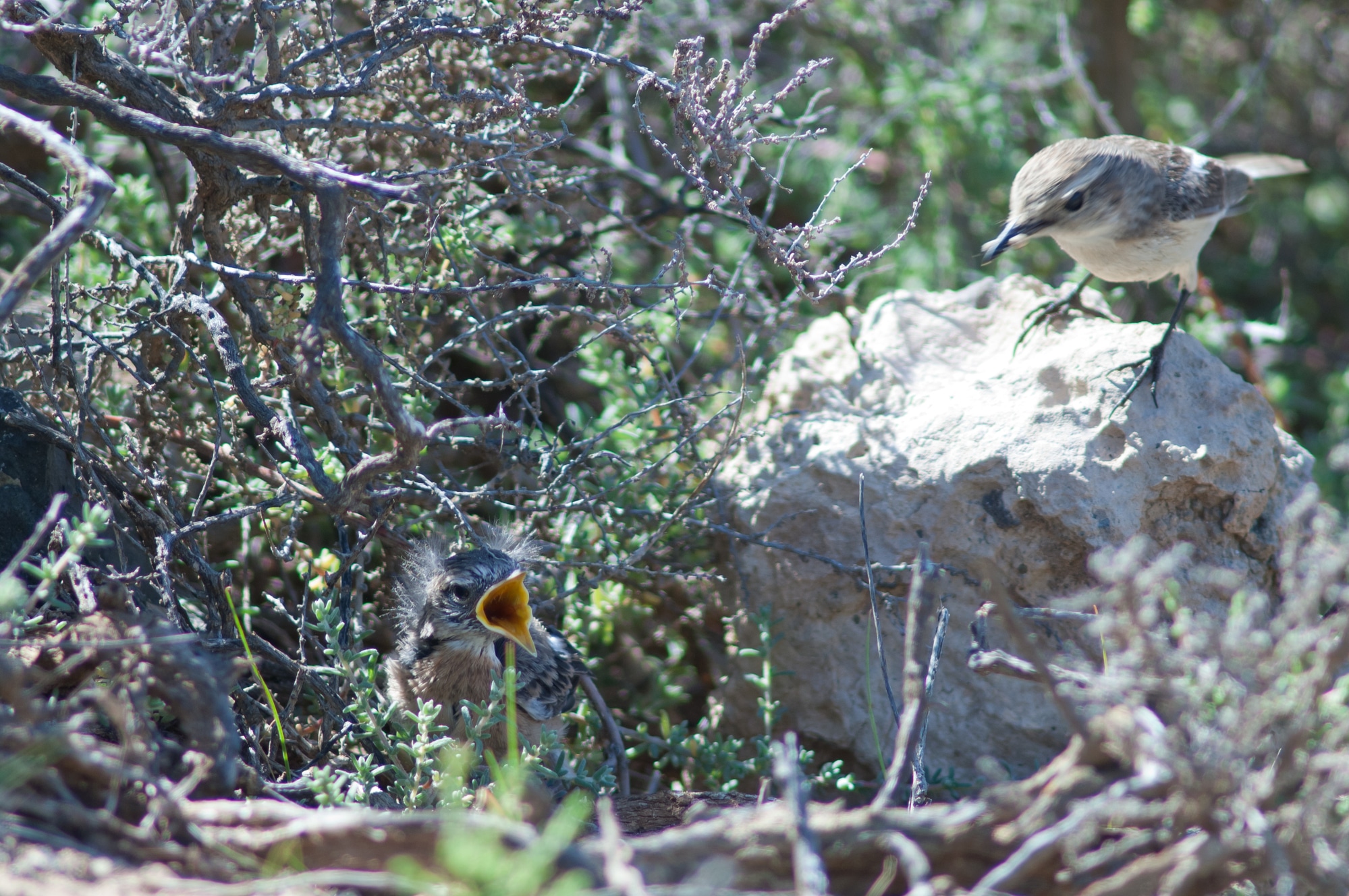A stonechat (scientific name Saxicola rubicola) is a small-sized bird in the family of thrushes. It is a common and widespread species with its habitat covering most of Europe, northern Africa, extreme southwestern Asia, to the Pacific Ocean. The stonechat bird gets its name from its call, which sounds like two stones being hit together.
What Does a Stonechat Look Like?
This small passerine bird species is easily recognised by its striking black upperparts (sometimes dark brown) and orange-red breast. Most significant is their black throat, black head, back and wings, and white half collar. It has a big head and a short tail. The stonechat’s underparts are mainly white; the male’s breast is paler. Its crown and nape are reddish-brown.
It’s easy to identify male stonechats thanks to their black back with white breast sides. The female stonechat looks different, having an overall brownish-grey plumage. Both male and female stonechats have a dark stripe on their breast sides.

Where Can I Find a Stonechat?
Stonechats can be found throughout Europe, North Africa, and southwestern Asia. In the UK, these wading birds can be found near bodies of water such as rivers, lakes and streams.
Stonechats inhabit heaths and conifer plantations or can often be found sitting on gorse bushes, singing away. They also live near marshes, heathland and boggy habitats.
Stonechat Diet
Stonechats are omnivores, which means that they feed on both plants and animals. They can eat just about anything, but they favour seeds because they digest them easily and don’t get sick from eating these foods. Young stonechats mainly eat small insects, but they start to eat seeds and berries when they get older.
The adult stonechat feeds mainly on insects such as grasshoppers and dragonflies; it also eats other arthropods such as snails, slugs, cutworms and earthworms; in winter it eats berries and nuts grown on bushes or trees.
This dark brown bird can easily camouflage while it forages on the ground or in low vegetation for insects, their main food source. Additionally, they will also eat scraps from human activity like bread crumbs.
This dumpy chat is very agile in flight, even though its body is small, and will hunt for food in shrubs and hedgerows. They will also eat invertebrates such as spiders when they are young so that their bodies can grow properly because spider meat contains protein which helps them grow.
Stonechats will use their strong wings to catch insects that are flying above them in the summer time. They will also catch small vertebrates such as frogs and lizards.

The Stonechat Song
The stonechat call is a special song that they use to attract mates. A male stonechat will find a mate in the spring time after the female stonechats have hatched their eggs. To attract a female stonechat, the male will advertise his territory by singing a beautiful tune that sounds like two small stones clashing together. He will raise his tail feathers up high and sing a sweet singing song that can be heard from great distances.
The courtship display consists of singing melodic songs for about an hour while weaving around in the air in sweeping arcs. If the female likes what she hears she will fly into the sky and begin to sing with him.
Nesting and Reproduction
Stonechats nest in dense vegetation or trees; they will climb up in a tree or bush (usually with a nest already made there) until they find the right spot to build their nest. They will pick a dry tree close to the open ground so that it will be easy for them to hunt for food by hopping on the ground.
The male stonechat bird builds a large platform in a tree or bush where he will stay with the female during the day while she takes care of the young ones. The female lays 3-5 eggs in March or April (in the UK); these eggs are pale-blue (sometimes greenish-blue) in colour and are about 19mm long by 14mm wide. The female stonechat bird will sit on the eggs for about a month until they hatch; she will also keep them warm under her body feathers.
When the young stonechats are born, they have no feathers and are blind, but they get their sight after about a week. Male and female stonechats take turns feeding their chicks. After seven days, the chicks can leave the nest and start flying and hopping around for insects nearby, with their parents helping them along the way. It takes a total of twenty-three days for newborn chicks to become independent from their parents.

Stonechat Behaviour
Stonechats are often regarded as handsome, but their ferocity can be very surprising. These birds are quite aggressive and will lock their bills together and strike out at anything they see as a threat. The males will use their claws when they are competing for dominance.
They can be quite vicious with one another because they have sharp claws on each foot to help them get food and hold on to branches when they try to fly away.

Stonechat Conservation Status
The IUCN has evaluated the stonechat bird as being of least conservation concern for global extinction. Their population is slowly growing, but they are still a common species all across Europe.
Sources and References
- Stonechat – newforestnpa.gov.uk
Sam loves to learn about animals and their habitats. He has been a nature lover from a very young age, and has been writing papers and articles about wildlife for as long as he can remember.
